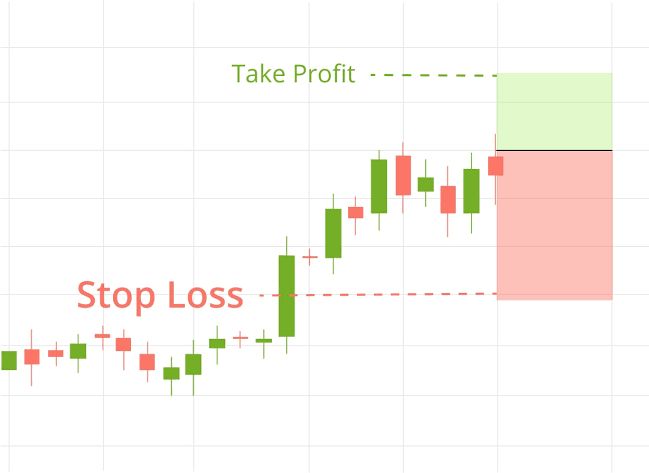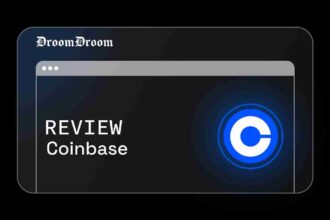It’s common knowledge that crypto futures trading provides traders huge winning potential. As interesting as this may seem, it’s more of a reward system, and not a cliché. Let’s explain.
- Possible Mistakes by Crypto Futures Traders
- 1. Ignoring Stop-Loss
- 2. Revenge Trading
- 3. Over Leveraging
- 4. Poor Understanding of the Margin by Crypto Futures Traders
- 5. Trading Without a Plan
- 6. Choosing the Wrong Trading Platform
- 7. Poor Understanding of Risk-Reward Ratio
- 8. Lack of Proper Research
- Conclusion
Futures trading provides traders with excellent earning potential through derivative contracts. However, you need to avoid certain mistakes to benefit from futures trading. These mistakes include emotional trading, overtrading, and neglecting stop-loss orders.
In March 2023, over $3 trillion trading volume was reported by experts, with Bitfinex and Deribit experiencing up to a 50% increase. Since the number of crypto futures traders is rising, we will discuss common mistakes to avoid. This information will be helpful to both intending and existing futures traders.
Possible Mistakes by Crypto Futures Traders
Cryptocurrencies are known to be volatile, exposing inexperienced traders to significant loss. However, crypto futures traders can educate themselves on common mistakes to avoid, which would improve their trading experience. This will also help new crypto futures traders to maintain emotional discipline, develop clear trading plan, and use the right risk management strategies. Thus, the mistakes discussed below will gradually increase traders exposure as they grow in trading experience.
1. Ignoring Stop-Loss

Since cryptocurrencies are highly volatile, informed traders implement a stop-loss strategy to minimize potential loss once the market price reaches a particular position. Thus, traders will set a minimum price on an exchange, and the platform will automatically release their money when the price hits this minimum amount.
When Ethereum and Bitcoin experienced a bearish market in 2021, the rate of stop-loss orders was high. This is because investors saw it as an opportunity to earn profits without constantly getting involved in the market movement. As a result, we highly recommend this strategy for new crypto futures traders who are yet to be familiar with market trends or how they work.
2. Revenge Trading
Revenge trading is when crypto futures traders are too focused on restoring their losses. They go into new trades every time to recover a significant loss. Unfortunately, the futures trading market is unpredictable, so many of these traders incur more losses.
One of the most common ways to stop revenge trading is to self-assess. Set realistic objectives that are not bound to emotions. Another thing is to assess the market condition frequently. For instance, when you observe that the market volatility is too high, you may hold back from trading, so you don’t make careless decisions.
3. Over Leveraging
Leverage is a common strategy employed by informed crypto futures traders. It simply means borrowing a large contract value to increase your market position. This happens when investors don’t have enough capital to pose a trade. However, this supposed gain strategy could lead to massive losses when you over-leverage.
The reality of leverage is that you will enjoy a massive profit if the market movement is in your favor, and if otherwise, the loss will be significant. Wherein the extent of loss is usually proportional to the investment capital. Thus, when you over-leverage, and the trade goes wrong, it will affect a large volume of your investment as well.
4. Poor Understanding of the Margin by Crypto Futures Traders
Margin is a critical concept crypto futures traders should know. It is mainly of two types, cross margin, and isolated margin, while each type of margin has pros and cons. Traders often make mistakes when they don’t know how to handle margin deposits appropriately.
In cross-margin, you can use one deposit to cover multiple trades, which is mostly suitable for novice traders. On the other hand, an isolated margin requires traders to set different margins for each position. Thus, an isolated margin is most appropriate for learned crypto futures traders with high leverage.
In a nutshell, understanding what margin entails and how it works, will help you to identify the right type of margin for you.
You can learn more about margin and futures from this article published by DroomDroom.
5. Trading Without a Plan
This is a common mistake among new futures traders. They trade without budgeting capital or planning how to react to sensitive market situations. While studying market trends, it’s essential to have a plan concerning your trading quantities and time margin.
When drafting a plan, you must be wise, especially with strategies that minimize your risk exposure. More so, if you are not conscious of the plan in place, you are very likely to trade by emotions. You must always keep track of your actions and the results.
6. Choosing the Wrong Trading Platform
Unfortunately, many traders ignore the reputation of the trading platform they use. Choosing a reliable trading platform can influence your trading experience. Thus, search for trading platforms with good reputations within the crypto industry.
When we conducted our research, we discovered that the Solus Finance platform has recently garnered much attention, especially since it launched its Alpha version. Here is an expert’s opinion about the platform:
“I quite liked the clear vision of founders which aimed at bringing 1M users to Web3 with the services of Solus. Adoption has been a challenge in the bear market, and a product which has the capacity to achieve this, deserves attention. On their plan for bringing their idea to life, they showcased impeccable enthusiasm in building a simple crypto derivatives market with low entry barrier which will attract non crypto natives to experience their service.
Nischal Shetty, Founder at WazirX & Crowdfire.
Interestingly, Solus Finance also reported to hit 100,000+ transactions in October 2023. It’s safe to say this platform has not only garnered traders’ attention but also earned the trust of many of the crypto community.
You may read this article to learn more about the crypto community and what it entails.
7. Poor Understanding of Risk-Reward Ratio
Risk to reward ratio is a term you often come across in crypto futures trading. What does it mean?
If crypto futures traders plan to invest in an asset, they will calculate the expected profit and determine if the risk involved is worth the reward they may get. For example, if you hold an initial position of $300 and the potential profit is $900, the risk to reward ratio is 1:3. Thus, risk-reward ratios are not a fixed rate.
Several crypto futures traders will have different risk-reward ratios since they will not have the same risk tolerance level. Traders’ level of expertise will also influence their risk to reward ratio. Remember that futures can be tricky, so you must implement the best risk management strategy to generate a massive Return on Investment (ROI).
8. Lack of Proper Research
Unfortunately, most potential crypto futures traders are guilty of making decisions solely on market tips. As much as experts’ opinions are crucial, you must also do your own research. You need to understand vital concepts of futures trading, such as liquidity, open interest, initial margin, funding rates, etc.
Here is an article explaining the concept of futures contract and the important terminologies.
Your research may also include using social media to inquire about experts’ opinions. Here is a tweet from the Co-founder of Solus Finance, explaining the mistakes to avoid in crypto futures trading.
Common mistakes made by a new crypto trader
1. Investing in FOMO rather than analysis
2. Investing on the basis of internet influencers
3. Investing extremely low (hedge all risk) or investing too high (undertaking extremely high risk)
4. Being impatient with market conditions
— Sanghitaa De (BUIDLing SOLUS) (@dey_sanghita) September 29, 2023Conclusion
Every mistake discussed above should be avoided; neglecting even one may cause a heavy pushback to your investment portfolio. Also, the mistakes mentioned are common among new crypto futures traders. You may also join crypto futures communities to identify the mistakes from other traders. Closely observe how experts learned from their trading mistakes, using their experience to make better decisions.



















